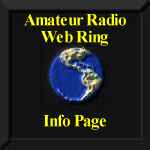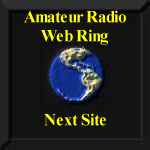Ham Radio, Amateur Radio in Cork. EI5FK
Current Solar Data (from NOAA)
| Solar X-rays: | | Geomagnetic Field: |
| |
Computed Real-Time Aurora Location
Provided by the Space Environment Center.

EI5FK'S 144/50/432 log for year 2000 Fixed errors 30/03/2001
EI5FK'S 144 MHZ SPORADIC E LOG FOR YEAR 2000
Locator map all modes 144 mhz 2000 EI5FK
Log of EI4IX FOR 144 mhz 'ES 24/07/00
EI4IX..[email protected]
EI2FSB'S 144 MHZ Sporadic e log for year 2000
EI2FSB..[email protected]
This page is not going to be a page of links but some will be provided, (Help)
Well it's about time I got a home page about one of my longest standing hobbies up and running on the Internet
I got my licence way back in 1983 when I had been teaching for 2 years, It must have been great sport in class when I was learning
morse code, some of the students might still remember my opening/closing remarks on the blackboard in a strange garbled
series of dot's and dashes, they had no morse exam at the end of the term but I had.
I was a member of the Cork Radio Club and attended theory classes in the Regional Technical College, I had a choice of
sitting both the theory exam and the morse exam at the same time and was successful in obtaining an "A CLASS LICENCE"
This meant that I could go on "HF" CW (morse) for the first year as well as voice on "VHF"
In 1983 the solar cycle was on the decline and due to licence restrictions A class licences were only allowed to operate on
the 40 and 80 metre bands with low power.....25 watts.
For some reason the idea of working unusual stations on unusual bands appealed to me and I ended up working long distant (DX)
on VHF, that is 144 to 145 mhz, at the start working simplex (direct) from home and also "portable" on FM was great, then I
learnt that "SSB" was more efficient so a Standard C-5800 was purchased and the fun began.
At the moment I am using a Yaesu FT-847, Bnos 180 watt solid state amplifier and the back 1/3rd section of a 19 ele Met antenna.
It is just 9 elements long due to serious wind problems at my new qth near Cork, Locator is IO51RT, It is a good VHF site with a clear take off
from s/east to s/west, I am planning a tower and a more serious antenna system in the future. Working France and Spain on 144/432 is easy with slight lift
conditions
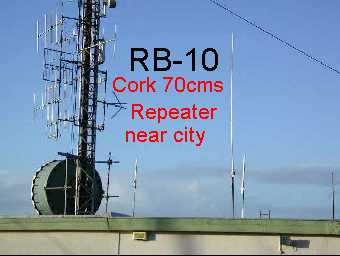
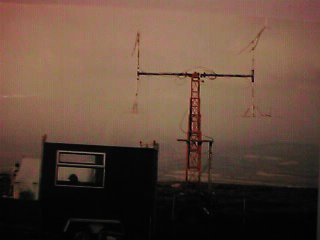
Some of the earlier images are of poor quality, taken in artificial light by a Casio QV-100 digital
camera, newer images are taken with Nikon coolpix 880 saved at low res. for faster loading
This picture was taken a few years ago in Kerry near the coast and shows an attempt to be the first station to complete a
trans-atlantic "QSO" (contact) in the 2 metre band, using a lot of power and 4 times 21 element long "YAGI" antennae that
are 22 foot, 6 inches long each, stacked in a special way, both horizontally and vertically to get a good beam pattern
and a fair power gain, to a layman it is a bit like shining a flash lamp and pointing it in a north west direction, the radio
signal would travel in a similar manner and in optimum conditions might be heard on the other side by an amateur listening
on our transmit frequency.
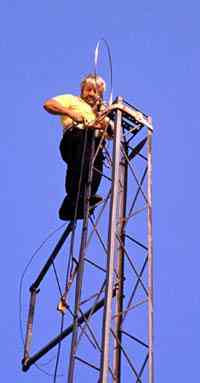
EA1VHF/B Beacon 144.402.5 This beacon is audible here with slight loft conditions, EA1DKV is working on the Halo antenna

Vhf stuff
Back to my HOME page
comments............[email protected]





